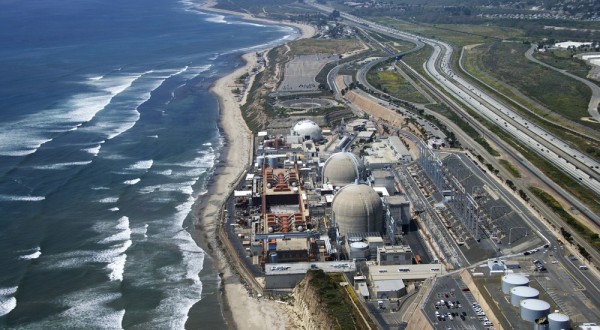San Onofre Shutdown Can Be a Loss For the Environmental Movement

 Credit: iofoto / Shutterstock.com
Credit: iofoto / Shutterstock.com
Perhaps the celebration of the San Onofre shutdown was pre-emptive. A handful of environmental activists gathered at the plant the morning of the announcement on June 7. However, replacing the energy the plant provided is harder than simply placing solar panels or producing more at oil/gas plants.
California still has a mandate to meet a 33 percent reduction -- from 2003 numbers -- in greenhouse gas emissions by 2020 because of AB 32. The state was well on its way to meeting the goal and still is, says San Diego Country Supervisor Ron Roberts, despite San Onofre's inoperation since January 2012. However, the temporary energy burden will be placed on "older technology," which are also carbon emitters.
Robert Stone is the director of Pandora's Promise, a recent documentary that profiles environmental activists said to have changed positions on nuclear energy. Stone and the film point out that renewables cannot produce the same levels of energy, at least in the near future, as nuclear. KPBS, San Diego County's National Public Radio affiliate, quoted Stone on how he sees the future of energy:
"We either have a lot of renewables plus a lot of gas and a lot of coal, or you deploy nuclear power and renewables, which is actually a viable solution if you want to go completely carbon free within the timeframe that climate scientists say we have left."
He also explains that he does not necessarily come from a pro-nuclear position. Instead, he comes from a position which considers and advocates energy options which do not produce greenhouse gasses:
"Fifty years from now, who knows? Maybe we could power the whole world with wind and solar or algae. I don't really care about nuclear power, I just care about any technology that can reduce CO2 emissions."
There's no surprise that upon the film's release anti-nuclear activists came out with their own take on the film. Mark Hertsgaard from The Nation is skeptical of the film's assumptions about nuclear energy being the most viable zero-emitting source. He points to wind and solar as a fast-growing industry and energy source, but also incorporates a historical perspective on nuclear energy:
"Personally, I have no ideological beef with nuclear power...But history teaches that every technology comes wrapped in a set of social, economic and political constraints. If we ignore those constraints, we will likely be surprised—and not in a good way—by what unfolds."
Stone stated that he'd been following the recent developments at the San Onofre nuclear plant. When all three units were functioning, the plant produced about 2,000 megawatts of energy, enough to supply approximately 1.4 million homes. The Breakthrough Institute states that the plant's inoperation will increase carbon emissions by 8 million metric tons a year.
California was able to reduce its carbon emissions continually up to 2011, which is what the most recent data provides. Data on 2012 emissions, the year of San Onofre's first halt, will be out early next year.
It may be necessary for Southern California's residents to cut down on consumption this summer, but it is easier said than done. As noted in Pandora's Promise, we hope to cut down on energy consumption, but instead we find more uses for it.
http://youtu.be/7fm8SVLOacQ



